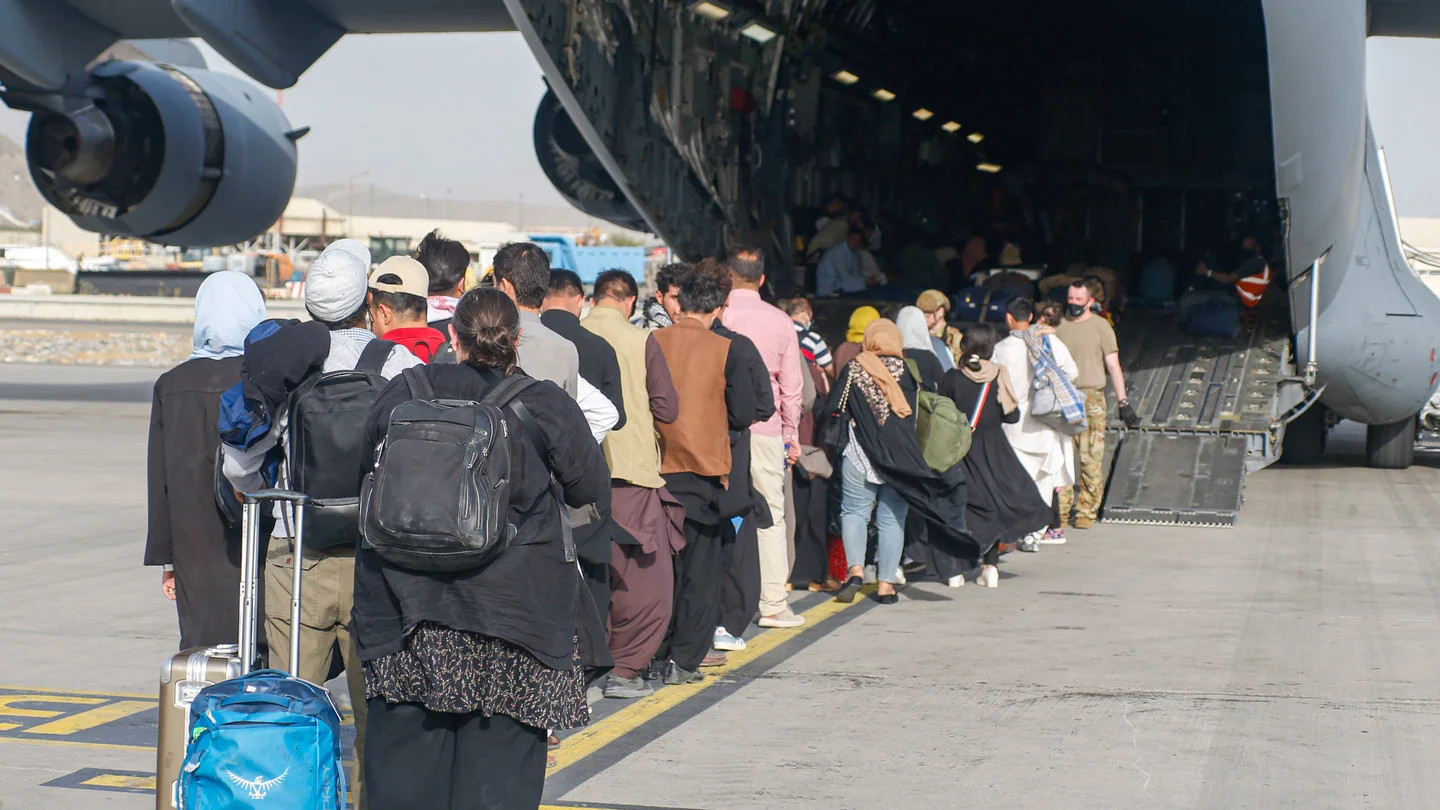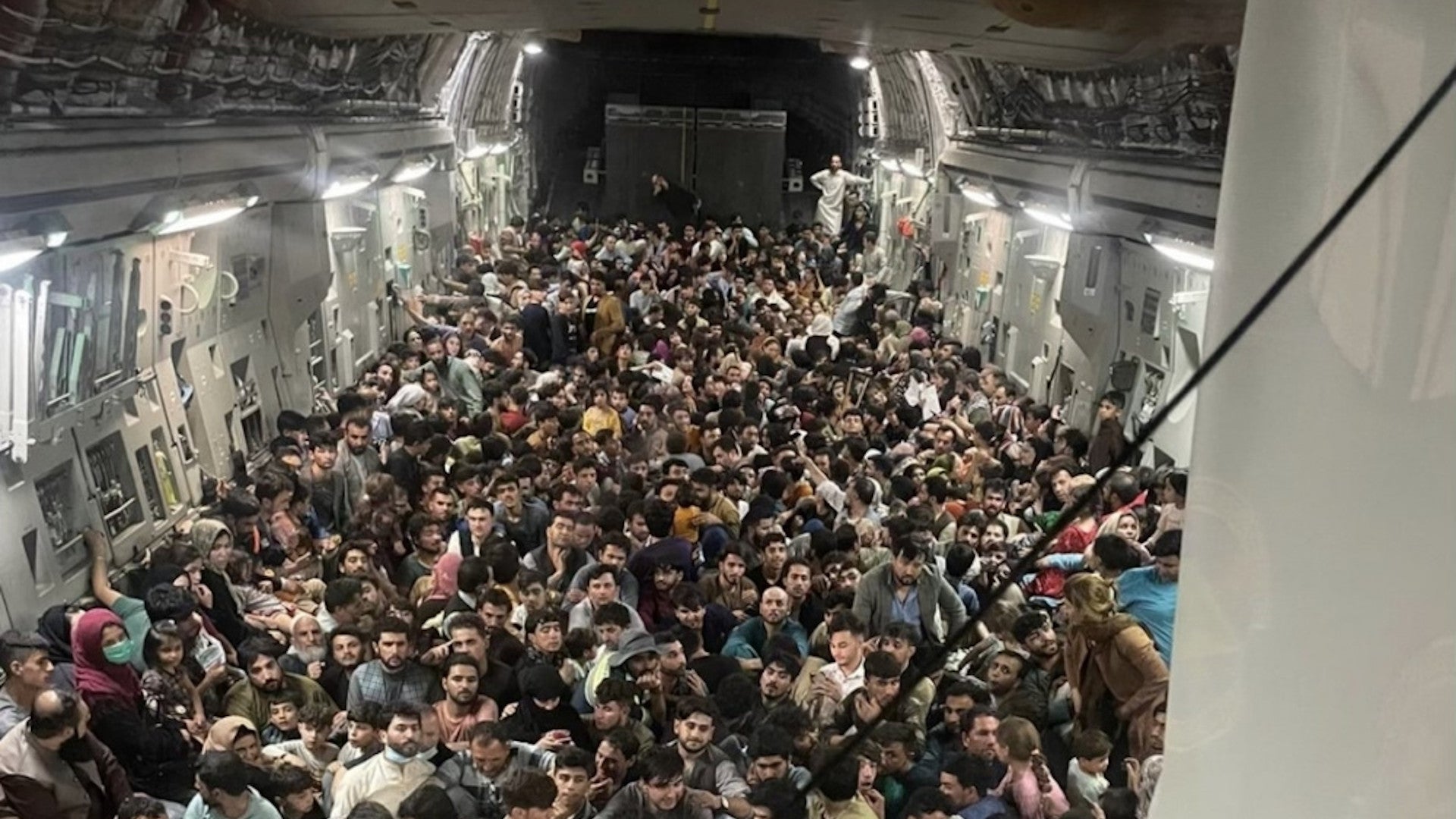The U.S. Air Force has corrected the record about just how many Afghan evacuees a heroic aircrew out of Dover Air Force Base in Delaware packed onto their C-17A Globemaster III in Kabul on Sunday night. The total number of passengers wasn’t 800, as The War Zone
was first to report based on recorded radio communications, it was even more than that. The Air Force says 823 were actually on that plane, which used the callsign Reach 871, and that this is the largest evacuation flight the type has ever flown.
The Air Force’s Air Mobility Command (AMC) issued the correction today. The service had earlier confirmed various details about the heavily laden flight, but had said that there were only 640 passengers on board when it left Afghanistan. However, this figure did not include more than 180 small children who rode on their parents’ laps, many of whom are clearly visible in a picture that subsequently emerged of Reach 871’s jam-packed cargo bay.

“The initial count of 640 inadvertently included only adults. 183 children were also aboard,” according to posts on AMC’s official Twitter account. “The original number was based on how many bus seats were filled departing the aircraft and didn’t account for the number of children in laps.”
This revised figure aligns with the audio recordings of conversations between Reach 871’s crew and other Air Force personnel, likely conducted via satellite radio, that had previously emerged and that you can listen to below. “800 people on your jet?! Holy… Holy cow… Ok…,” a person can be heard saying at one point after getting the estimated headcount from an individual on the C-17A.

It’s also not surprising that the crew of Reach 871 didn’t have a firm grasp at the time on exactly how many people were in the back. The plane had been on the ground at Hamid Karzai International Airport on Aug. 15, 2021, the day the Taliban marched into the city, touching off days of chaotic and terrifying scenes as desperate Afghans tried to flee the country by air. Amid the chaos on Sunday night, hundreds of Afghans began loading themselves into the back of the plane.
These individuals had been cleared to evacuate with U.S. assistance, but were not all on the official manifest for this flight, according to Defense One. Reach 871’s crew was presented with a choice of trying to unload and then reload the plane with only individuals on their list, or to try to get as many people on as they could.

“We have women and children and people’s lives at stake, it’s not about capacity or rules and regulations—it’s about the training and the directives that we were able to handle to make sure we could safely and effectively get that many people out,” Air Force Lieutenant Colonel Eric Kut, the commander of Reach 871 during the sortie, said, according to Defense One.
“Everybody was very thrilled to actually leave,” Air Force Technical Sergeant Justin Triola, a loadmaster on the flight, told CNN’s New Day this morning.
The Air Force has also now confirmed that Reach 871’s crew will not face any disciplinary action for any breaches of protocol over the massive evacuation flight. “That crew is facing no disciplinary action for the mission of Reach 871,” Air Force Major General Thad Bibb, head of 18th Air Force, AMC’s top operational command, told Defense One.
A C-17A’s official maximum passenger capacity, when using seats on pallets attach to the cargo bay floor and others mounted on the interior walls, is only 134. Past evacuation flights have seen more people loaded onto Globemaster IIIs, using the “floor loading” method also on Reach 871, including one flight in 2013 that carried 670 people to safety after Typhoon Haiyan hit the Philippines.
The crew of Reach 871 now holds the undisputed record for total people evacuated from a crisis via C-17A. With thousands still left in need of help getting out of Kabul, where the overall security situation still remains very fluid, only time will tell how long that impressive life-saving record might stand.
UPDATE:
It looks like the standard C-17 load has been modified to get as many people out as safely as possible. Contingency Response airman can work up to eight planes at a time to keep a flow of aircraft moving:
Contact the author: joe@thedrive.com
